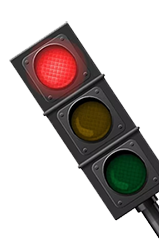


Before you start your driving lessons on a public road you need to present the instructor with your official learners license. You can apply to be tested for a learner's license at any registered driving license testing centre (DLTC) on the appropriate application form (form LL1).
The learner's license test will cover the following sections:
The learner's license will be valid for a period of 24 months from the day of issue.
Motorcycles 125cc or less (without a sidecar):16 years
Light Motorcycle vehicles not more than 3500kgs: 17 years
All other vehicles (including motorcycles over 125cc): 18 years
If you are suffering from one of the following diseases or disabilities:
The theory test is a multiple-choice test consisting of questions for which you must choose the correct answers from the options provided. At some testing centers you are able to complete this test using a computer otherwise it is a pen and paper test.
For the pen and paper test you will be given a book of questions, an answer sheet, a chart of the road signs and a book showing various road layouts and pictures of the controls of vehicle.
The test generally consists of 64 questions spread across the syllabus below:
---------------------------------------------
Section: Rules of the Road
Number of questions: 28
Pass mark: 22
------------------------------------------------
Section: Road signs-signals and marking
Number of questions: 28
Pass mark: 23
------------------------------------------------
Section: Controls of the vehicle
Number of questions: 8
Pass mark: 6
Vehicle controls are items such as the steering wheel (handlebars for motorcycles), brakes, clutch pedal, accelerator pedal, speedometer etc. You must know the function of all the vehicle controls.
Important: Although the layouts for the controls vary across the different makes and models of vehicles, their functions remain the same.
Vehicle controls are items such as the steering wheel (handlebars for motorcycles), brakes, clutch pedal, accelerator pedal, speedometer etc. You must know the function of all the vehicle controls.
Important: Although the layouts for the controls vary across the different makes and models of vehicles, their functions remain the same.